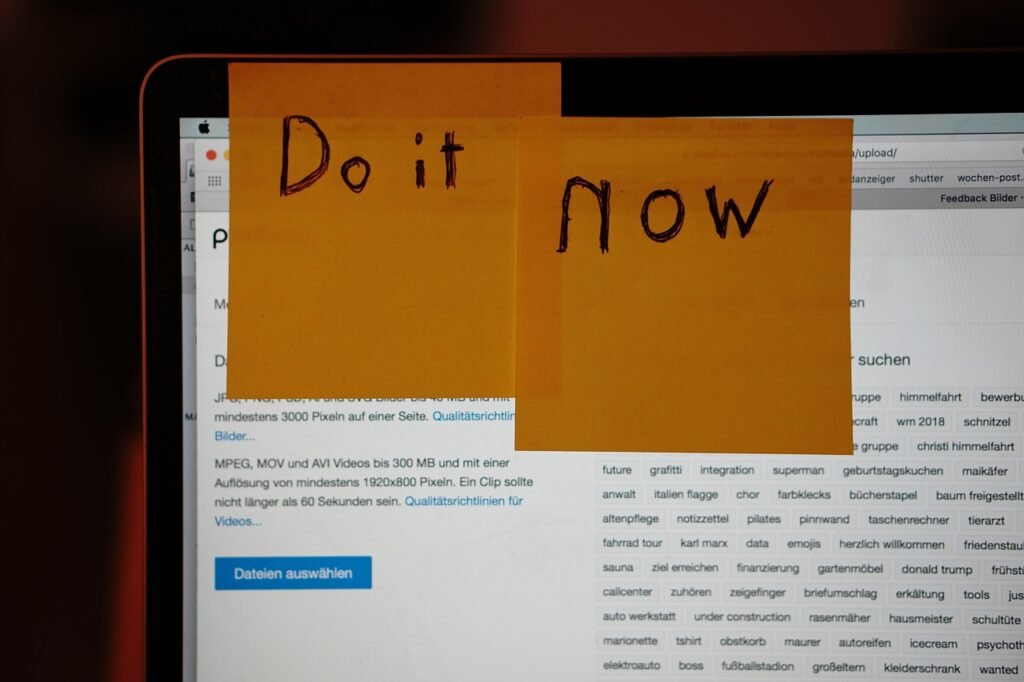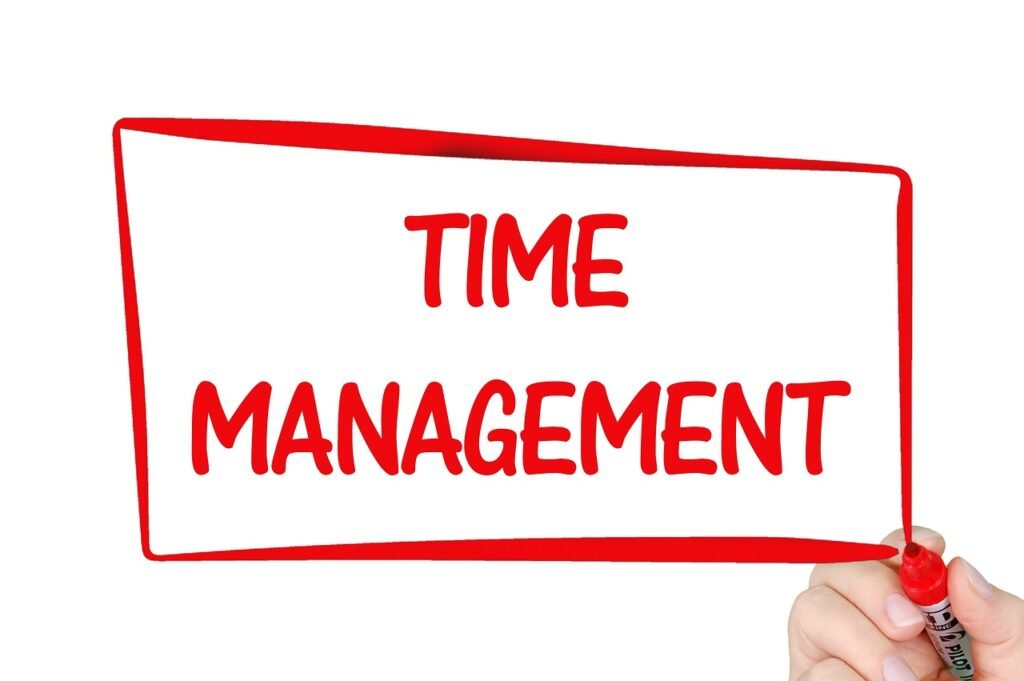
Introduction to Smarter Work Strategies
In today’s dynamic landscape, discovering methods to enhance productivity without increasing effort is paramount.
The challenge lies in juggling multiple responsibilities while maintaining a high level of performance.
Adopting smarter work strategies can significantly reduce stress and increase efficiency, allowing you to accomplish more in less time.
One of the first steps in this journey is understanding the principles of smart work.
Unlike hard work, which often involves sheer effort and long hours, smart work focuses on optimizing processes and utilizing available resources effectively.
This means identifying the key tasks that drive your goals forward and finding innovative ways to complete them.
Consider the role of automation and technology in your daily routine.
With the right tools, mundane tasks can be streamlined, freeing up your time for more critical activities.
It’s not just about using tools but choosing the ones that align best with your needs.
Productivity apps, for instance, can help you organize tasks, set reminders, and keep track of your progress with minimal effort.
Another cornerstone of smart work is effective prioritization.
Knowing which tasks are most important and tackling them first can dramatically enhance your productivity.
This approach ensures that your energy is spent on activities that have the highest impact, rather than getting bogged down by less significant tasks.
Time management techniques also play a crucial role.
By breaking your work into manageable chunks and setting specific time frames for each task, you can avoid the trap of overcommitting and reduce procrastination.
These strategies help maintain a steady workflow and keep you on track.
Creating a conducive work environment is equally important.
Whether you work from home or in an office, a dedicated space free from distractions can significantly boost your focus and efficiency.
Simple adjustments like a comfortable chair, adequate lighting, and a clutter-free desk can make a substantial difference.
Effective collaboration is another aspect of smart work.
Clear communication and well-defined roles within your team can prevent misunderstandings and ensure everyone is aligned with the common objectives.
By embracing these smarter work strategies, you position yourself to achieve your goals more efficiently and enjoy a more balanced work life.
Harnessing Technology

In an age where technology is at our fingertips, tapping into the right tools can revolutionize the way we work.
The digital landscape is teeming with resources designed to streamline workflows and boost productivity.
One effective approach is to utilize productivity apps that keep your tasks and deadlines in check.
With features like task lists, calendar integration, and progress tracking, these apps ensure that you stay organized and on top of your game.
Automation is another game-changer in the realm of modern work.
By automating repetitive tasks, you free up valuable time to focus on activities that require your unique talents.
For instance, email filters can sort incoming messages based on priority, while software can handle data entry and basic accounting tasks.
Imagine the relief of knowing that mundane chores are being taken care of automatically, giving you more time to dedicate to creative and strategic projects.
Cloud storage and collaboration tools also play a crucial role in enhancing efficiency.
Platforms like Google Drive, Dropbox, and Microsoft OneDrive allow you to store, access, and share documents from anywhere.
These tools facilitate real-time collaboration, making it easier for teams to work together regardless of their physical locations.
With synchronized access to files, team members can contribute to projects simultaneously, reducing the back-and-forth usually associated with collaborative work.
Communication tools have also evolved to support smarter work habits.
Video conferencing apps, chat platforms, and project management software are essential for maintaining seamless communication within teams.
Tools like Slack, Zoom, and Microsoft Teams offer various features that keep everyone connected and in the loop.
Instant messaging, video calls, and shared workspaces ensure that communication barriers are minimized, leading to more efficient teamwork.
Lastly, don’t overlook the power of analytics and performance tracking tools.
These resources provide valuable insights into your work habits and project progress.
By analyzing this data, you can identify areas for improvement and make informed decisions to optimize your workflow.
Tools that offer dashboards and reports can help you visualize your achievements and set realistic goals, driving continuous enhancement in your work processes.
Effectively Prioritizing Your Tasks

Effectively prioritizing your tasks is a critical component of working smarter.
Start by identifying tasks that have the highest impact on your goals.
Techniques like the Eisenhower Box can be incredibly useful for this.
This method involves categorizing tasks based on their urgency and importance, allowing you to focus on what truly matters.
Embracing the idea that you should “eat a live frog first thing in the morning, and nothing worse will happen to you the rest of the day” can be an effective way to tackle the most challenging tasks at the start of your day to make the rest of your day more manageable.
Additionally, breaking your workload into smaller, more manageable tasks can make it easier to maintain momentum.
This technique, often referred to as “chunking,” allows you to tackle large projects step by step, which can make the process less daunting and more rewarding.
Another valuable strategy is to regularly review and adjust your task list.
What may have seemed important a week ago could be less critical now.
Regular check-ins enable you to adapt to changing priorities and ensure that your efforts remain aligned with your overarching goals.
Consider also using color-coded systems or priority labels to visually distinguish between tasks.
This simple yet effective method can help you quickly identify what needs immediate attention versus what can be deferred.
Don’t underestimate the power of delegation as well.
If you’re working within a team, distributing tasks according to each member’s strengths can lead to a more efficient workflow.
This not only lightens your load but also leverages the unique skills within your team to achieve better results.
Lastly, it’s essential to give yourself breaks and avoid burnout.
High-priority tasks often require intense focus, and taking short breaks can help you maintain a high level of productivity.
Techniques like the Pomodoro Technique, which encourages working in focused intervals followed by short breaks, can be particularly effective for maintaining sustained concentration and energy.
Managing Your Time Better

Time is a precious resource, and managing it effectively can make a world of difference in your productivity.
Begin by identifying your most productive hours—those times of the day when you’re naturally more focused and energetic.
Schedule your most important tasks during these peak periods to maximize efficiency.
Consider adopting time-blocking strategies, where you allocate specific time slots for different activities.
This method not only helps you stay organized but also minimizes the risk of multitasking, which can often lead to reduced productivity.
Use digital calendars or planners to visually map out your day, ensuring that each task has its designated time.
Another useful technique is the two-minute rule.
If a task will take two minutes or less to complete, do it immediately.
This helps in clearing out minor tasks quickly, preventing them from piling up and becoming overwhelming.
Don’t forget to factor in buffer time between tasks.
Allowing a few minutes of transition time can help you mentally shift gears and prepare for the next activity, making your workflow smoother.
This is particularly useful when moving between tasks that require different levels of concentration or different types of skills.
Time management also involves setting clear boundaries.
Whether it’s setting office hours for yourself when working from home or designating “do not disturb” periods, having clear limits can help you maintain focus and reduce interruptions.
Inform colleagues and family members of these boundaries to ensure they respect your dedicated work time.
Utilize tools like task managers and time-tracking apps to keep tabs on how you’re spending your time.
These tools can provide valuable insights into your work patterns and help you identify areas where you might be wasting time or could be more efficient.
Reviewing these patterns regularly can lead to better planning and improved time allocation.
Lastly, don’t underestimate the importance of rest and rejuvenation.
Scheduling regular breaks and downtime is crucial for maintaining sustained productivity and preventing burnout.
Incorporating short, frequent breaks can keep your mind fresh and your energy levels high throughout the day.
Boosting Focus and Reducing Distractions

Staying focused amidst the multitude of distractions we face daily is a challenge, but it’s crucial for maintaining high productivity.
One of the best ways to enhance your concentration is by creating a workspace that minimizes interruptions.
This might mean setting up a dedicated home office or rearranging your current space to eliminate clutter and distractions.
Noise can be a major disruptor.
Consider using noise-canceling headphones or listening to white noise or instrumental music to create an auditory environment conducive to deep work.
If you’re working in an office, politely communicate your need for focus periods to your colleagues.
Utilizing the Pomodoro Technique can also be highly effective.
This method involves working in focused intervals of around 25 minutes, followed by a short break.
This approach not only enhances concentration but also keeps you energized and prevents burnout.
Adjust the time intervals based on your personal focus capacity to find what works best for you.
Digital distractions are another significant barrier to focus.
Limit your exposure to notifications by setting your devices to “Do Not Disturb” mode during work sessions.
Consider using apps that block distracting websites and social media during your productive hours.
Another useful strategy is to set specific goals for each work session.
Having clear objectives helps direct your attention and provides a sense of accomplishment when tasks are completed.
Writing down your goals and keeping them visible can serve as a constant reminder of what you need to achieve.
Incorporate regular breaks to rest and recharge.
Brief periods of physical activity, such as stretching or taking a short walk, can invigorate your mind and body, making it easier to maintain focus when you return to work.
Lastly, practice mindfulness techniques.
Simple practices like deep breathing exercises or short meditation sessions can help center your thoughts and reduce stress, making it easier to concentrate on the task at hand.
Mindfulness can also enhance your overall well-being, contributing to sustained productivity.
Collaborating Effectively with Team Members

Strong collaboration is a cornerstone of any successful team, and leveraging the right tools can make all the difference.
To start, invest in robust communication platforms like Slack, Microsoft Teams, or Zoom.
These tools offer various features, including instant messaging, video calls, and shared workspaces, ensuring that team members can easily connect and share information in real-time.
Clear communication is essential for preventing misunderstandings and ensuring that everyone knows their responsibilities.
Establishing well-defined roles within your team can streamline processes and ensure that tasks are assigned based on each member’s strengths.
This not only enhances efficiency but also fosters a sense of ownership and accountability.
Regular check-ins and status updates are vital for keeping the team aligned and addressing any roadblocks promptly.
Scheduled meetings, whether daily stand-ups or weekly progress reviews, provide a structured forum for discussing ongoing projects, sharing insights, and making necessary adjustments.
Document sharing and collaborative editing tools such as Google Drive or Microsoft OneDrive can significantly enhance teamwork.
These platforms allow multiple users to work on the same document simultaneously, ensuring that everyone has access to the latest version and can contribute their input without the hassle of sending files back and forth.
For project management, consider using tools like Trello, Asana, or Monday.com.
These applications help you track project progress, assign tasks, and set deadlines, offering a visual overview that makes it easier to manage complex projects and keep everyone on the same page.
Lastly, fostering a culture of openness and support is crucial. Encourage team members to share their ideas and feedback openly.
Recognizing and celebrating achievements, no matter how small, can boost morale and motivate everyone to contribute their best efforts.
A collaborative environment where every team member feels valued and heard is key to achieving collective success.
Committing to Continuous Learning and Adaptability

In our ever-evolving world, the ability to continuously learn and adapt is a cornerstone of long-term success.
Staying ahead means not just keeping up with the latest trends but actively seeking new knowledge and skills.
Subscribing to industry newsletters, reading books, and participating in online courses or webinars can significantly expand your expertise.
These activities help you stay informed about emerging technologies and best practices, equipping you with the tools needed to innovate and excel in your field.
Don’t underestimate the power of mentorship and networking.
Engaging with peers and industry leaders through professional groups or social media platforms can provide valuable insights and foster new opportunities.
Mentorship, in particular, offers personalized guidance that can accelerate your learning curve and help you navigate complex challenges more effectively.
Embrace feedback as a vital component of your growth. Constructive criticism from colleagues or clients provides an outside perspective that can highlight areas for improvement you might overlook.
Regularly seeking and reflecting on feedback ensures that you remain open to change and improvement.
Experimentation and curiosity should also be integral parts of your approach.
Trying out new methods and tools, even if they fall outside your comfort zone, can lead to breakthroughs in your work processes.
This willingness to explore new avenues fosters a culture of innovation and keeps your skills sharp.
Lastly, cultivate a growth mindset.
Viewing challenges as opportunities to learn rather than setbacks can dramatically shift your approach to work and personal development.
A growth mindset encourages resilience and persistence, essential traits for adapting to the fast-paced changes in today’s professional landscape.
Wrapping Up and Future Actions

Embracing a smarter approach to work isn’t just a fleeting trend; it’s a life-changing shift that can redefine how you achieve your goals.
By incorporating innovative tools and prioritization techniques, you create a foundation that supports long-term success and well-being.
Harnessing technology effectively ensures that you stay ahead of the curve, making your workflow more efficient and freeing up time for higher-value tasks.
Effective time management and focused work habits form the backbone of sustained productivity.
By understanding your peak performance periods and allocating tasks accordingly, you can maximize your output without stretching yourself thin.
Moreover, fostering a collaborative environment where communication flows seamlessly and team members play to their strengths can elevate your collective output to new heights.
Continuous learning and adaptability are key to staying relevant in a rapidly changing landscape.
By actively seeking new knowledge and embracing feedback, you position yourself to navigate challenges with confidence and resilience.
Cultivating a growth mindset encourages you to view obstacles as opportunities for development, fueling your drive to excel and innovate.
As you move forward, regularly reassess and fine-tune your strategies to ensure they remain aligned with your evolving goals and circumstances.
Keep an eye out for new tools and methods that can further enhance your efficiency, and don’t hesitate to experiment with different approaches to find what works best for you.
By committing to these practices, you’ll not only boost your productivity but also enjoy a more balanced and satisfying work life.
Implement these strategies and witness the transformative impact on your daily routine.
The journey to working smarter is ongoing, but each step you take brings you closer to a more fulfilling and efficient professional life.
